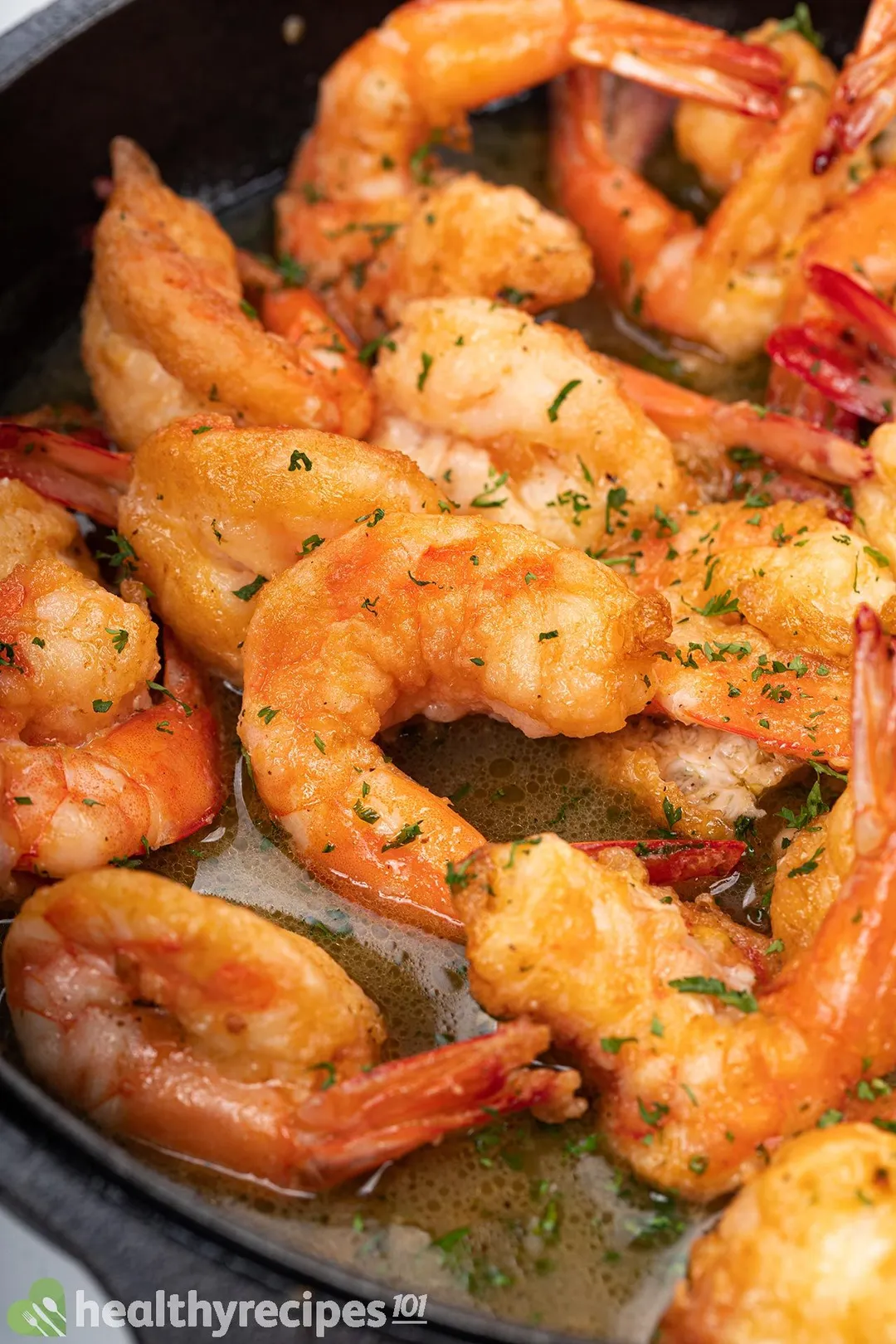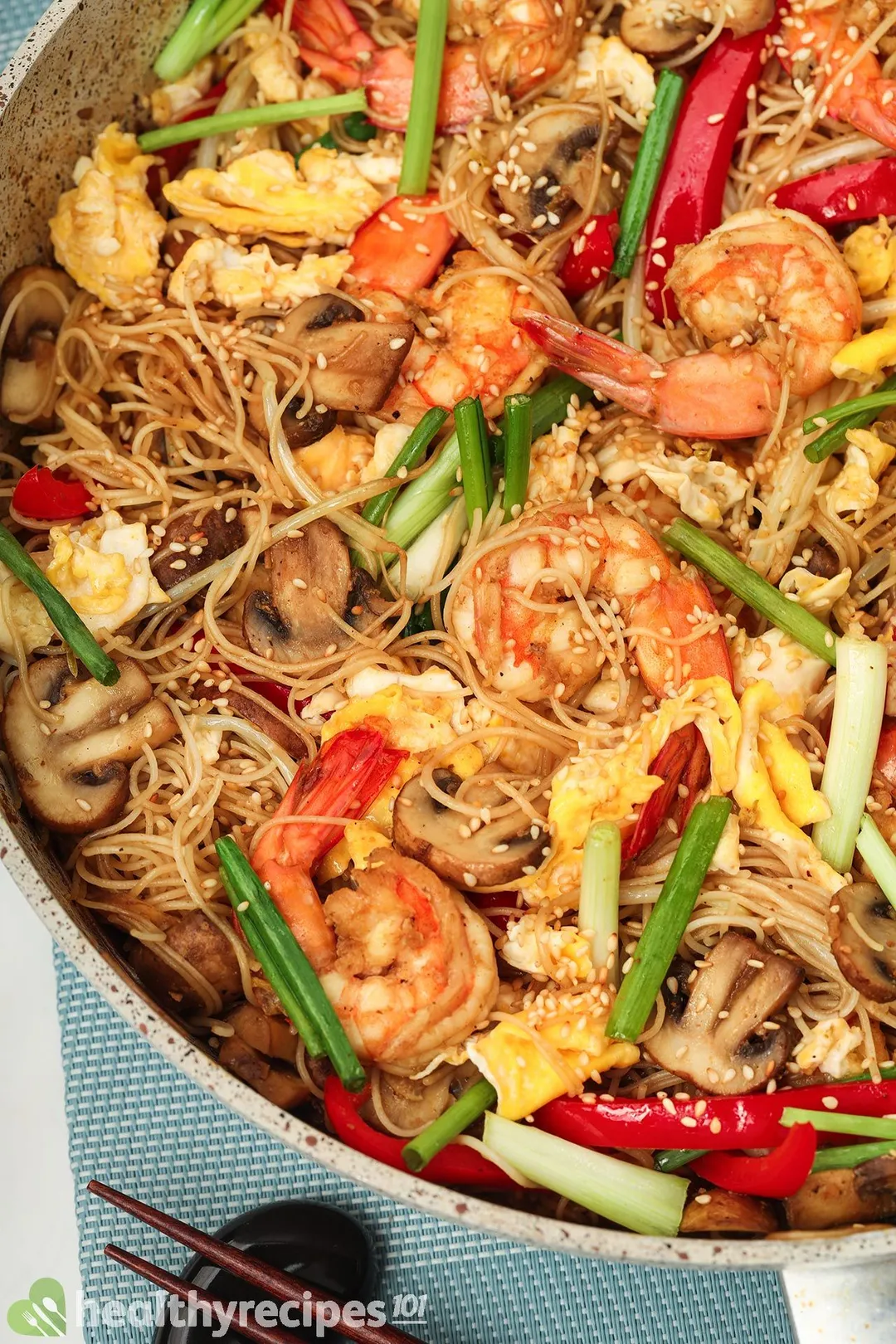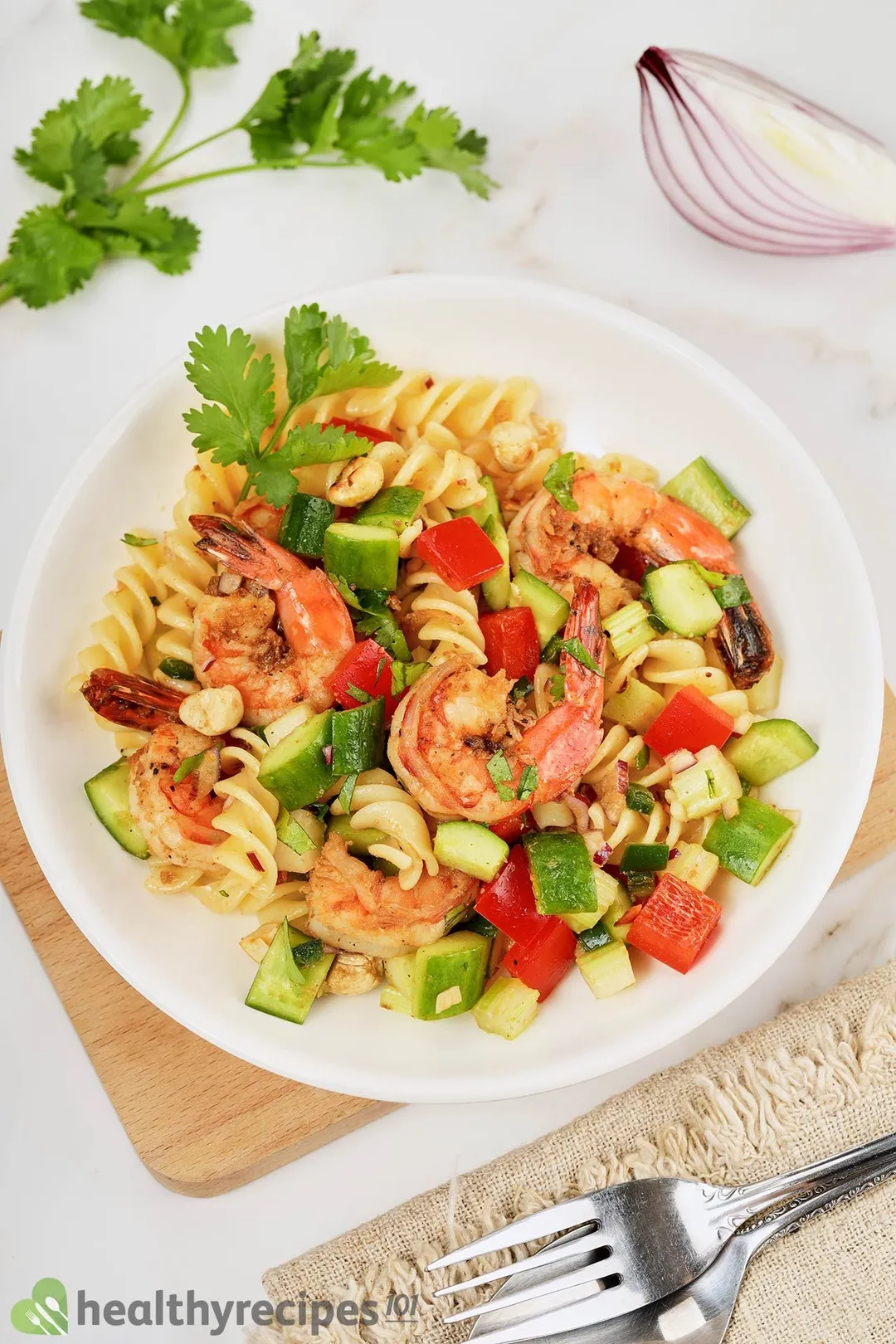Today’s shrimp Francese recipe features battered shrimp tossed in a lemony, buttery sauce. It tastes phenomenal, but it is super easy to make.
The original version was made with chicken (see recipe here) instead of shrimp and used to be a very popular dish in the upper state of New York. Diners would receive one or two huge chicken breast cutlets with a generous amount of the golden, buttery sauce graciously spooned over the top. I personally think it’s an exaggeration, but I’ve heard that at the time, it never ceased to make people gasp in awe.
Although the dish has ‘France’ in its name, it has nothing to do with France. It was brought to New York by Italian immigrants, so it can be considered a cross between Italian and American cuisines.
Is Our Shrimp Francese Healthy?
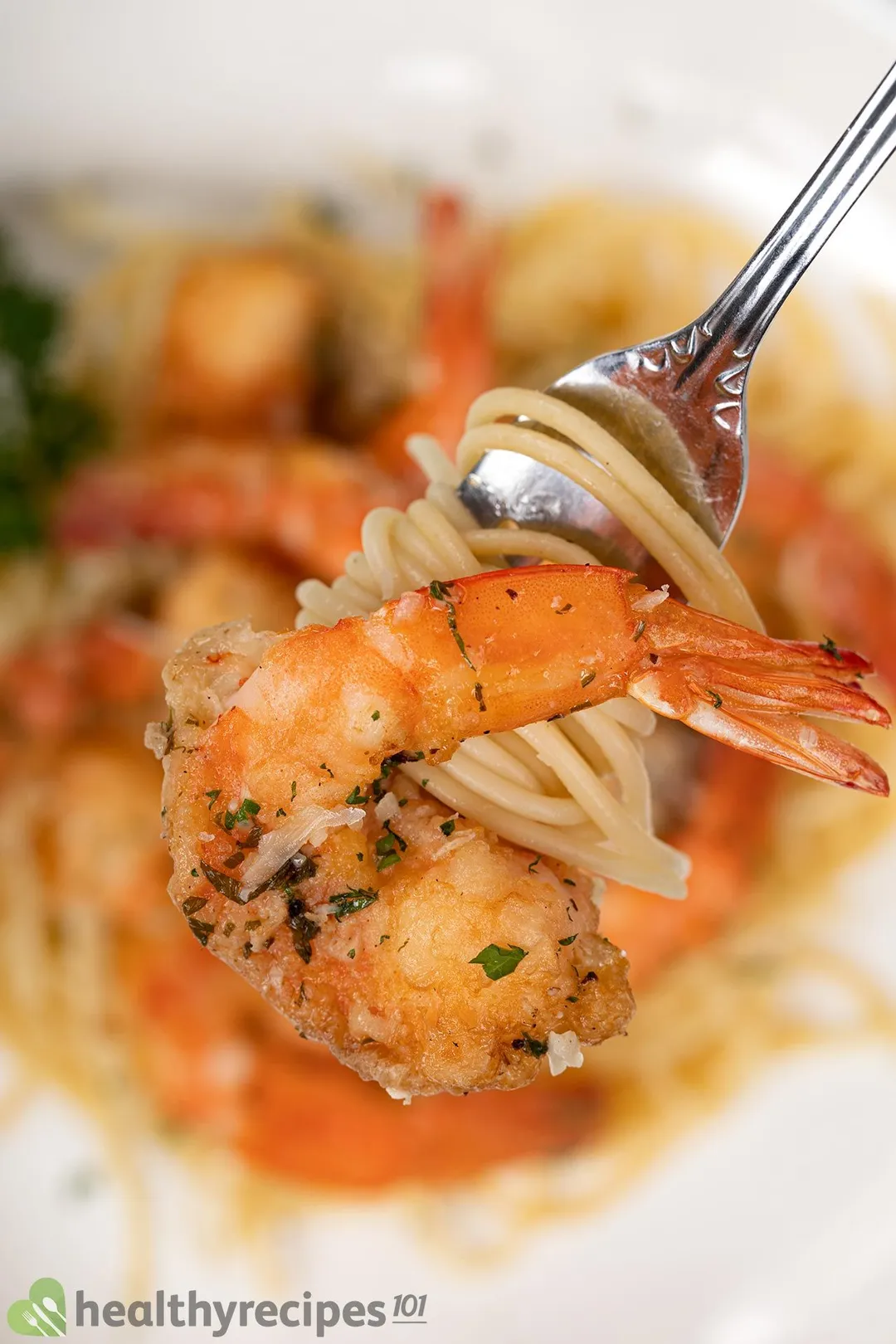
Involving deep-frying and lots of butter, shrimp Francese gives the impression of being unhealthy. Some say deep-fried foods are even linked to cancer and while we are well aware of the possible risks, we still think that our shrimp Francese can be included in a healthy diet.
1. Deep-Fried Foods Have Been Misunderstood
There’s this substance in deep-fried foods called acrylamide, produced when starch and proteins are cooked in hot oil for too long. Findings have found that this substance can raise the risk of cancer in animals.
While that sounds pretty scary, deep-fried foods are not the only foods that contain acrylamide, because it is also a byproduct of the Maillard reaction. It’s the kind of process that makes your food brown, smoky, and much more flavorful. Caramelized onions, toasted breads, BBQ meats with grill marks, etc. all have a little acrylamide in them.
Picking on deep-fried foods alone is, hence, kind of unfair.
Instead, we choose moderation. You can certainly have French fries, chips, or other foods you like once in a while, just don’t have too much. There’s no recommended limit on acrylamide yet, but since fried foods are high in calories, regulating your calorie intake may help limit your acrylamide intake.
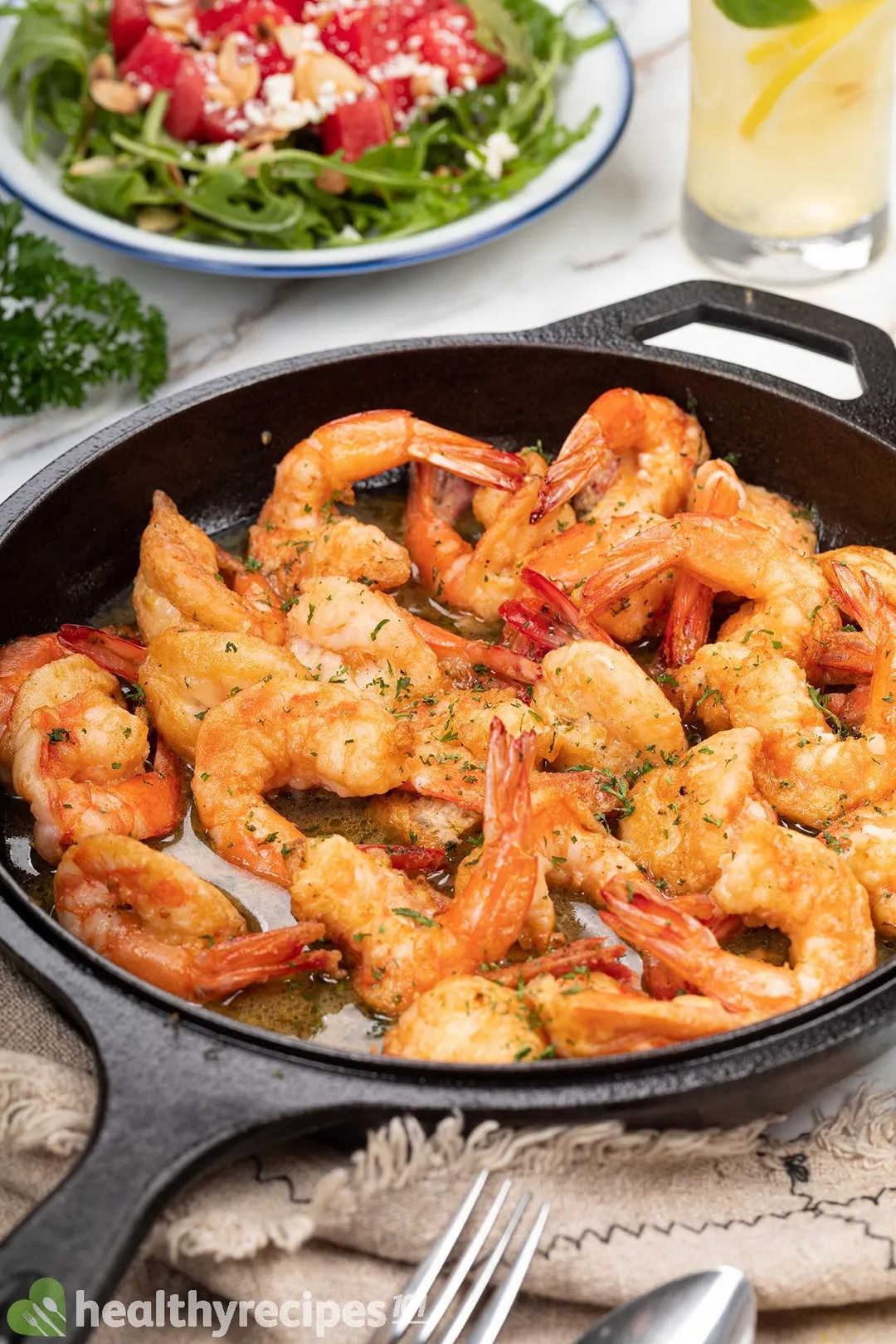
2. Grease Isn’t The Problem
Like proteins and carbohydrates, fats are nutrients. Our bodies need fats to function properly, and fats are considered the body’s clean energy. Hence, it is not unhealthy to once in a while indulge in a dish high in fats.
What we should be concerned about here is which type of fats, the amount, how often, and whether we pair this with other nutrient-dense options.
Shrimp Francese contains butter and oil, most of which are saturated fats, a.k.a the bad kind of fats. Avoiding them completely is a big step towards healthy eating, but to some people, such restraint can make their diet less enjoyable.
We think it’s a pretty big cost, so instead of avoiding delicious foods, we simply avoid having too much of them. And at Healthy Recipes 101 we have the necessary tools to make sure that each serving of our recipes contains no more than the amount we believe is moderate.
Main Ingredients
You’ll need shrimp, butter, white wine, lemon juice, chicken broth, eggs, flour, and several seasonings.
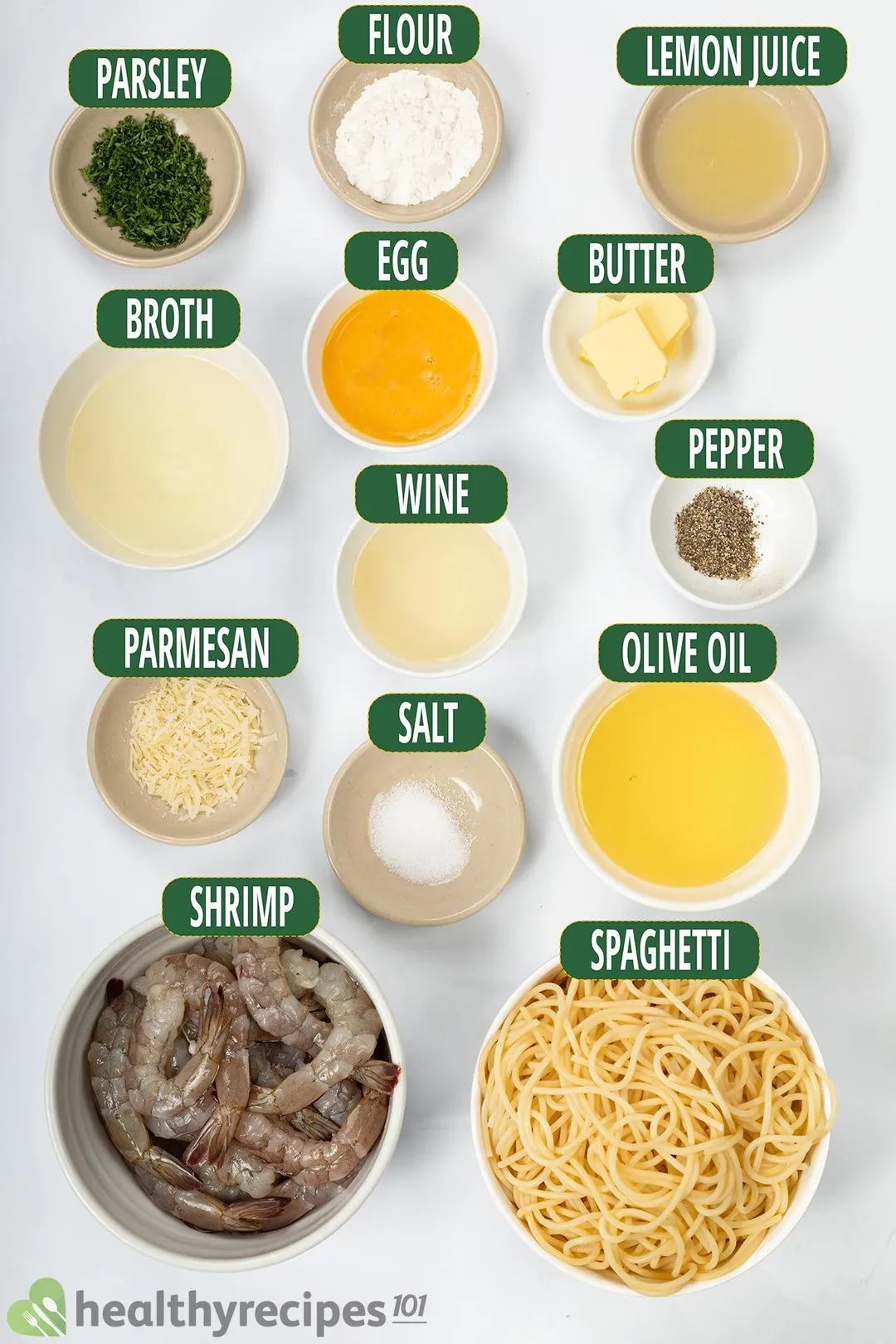
We also serve this dish with cooked spaghetti, so you should purchase and cook some yourself beforehand. You can use spaghetti or your favorite type of pasta.
Unlike how meats are traditionally breaded, our shrimp has only two layers of coating: all-purpose flour and beaten eggs. Due to the lack of breadcrumbs, it won’t turn out as crispy but considering how the sauce will soften the coating anyway, these two alone are enough.
The sauce is made with just white wine, butter, lemon juice, chicken broth, and seasonings, all simmered together in the pan. It is that simple.
How to Store and Reheat the Leftovers
The best way to store this dish is to keep the fried shrimp in an air-tight container, and the sauce in another one. Both can be refrigerated for 4 days. To consume, place all into a saucepan and cook over medium heat until heated through.
Still though, reheating will the flour coating a chewier texture. If possible, we suggest you make just enough to consume in one sitting.
What to Serve with
Shrimp Francese clearly lacks some freshness, so we serve it with our watermelon arugula salad and lemonade. Both of them have the necessary freshness to balance out the shrimp’s rich sauce, rounding off the meal perfectly:
- Shrimp Francese
- Watermelon Arugula Salad
- Lemonade
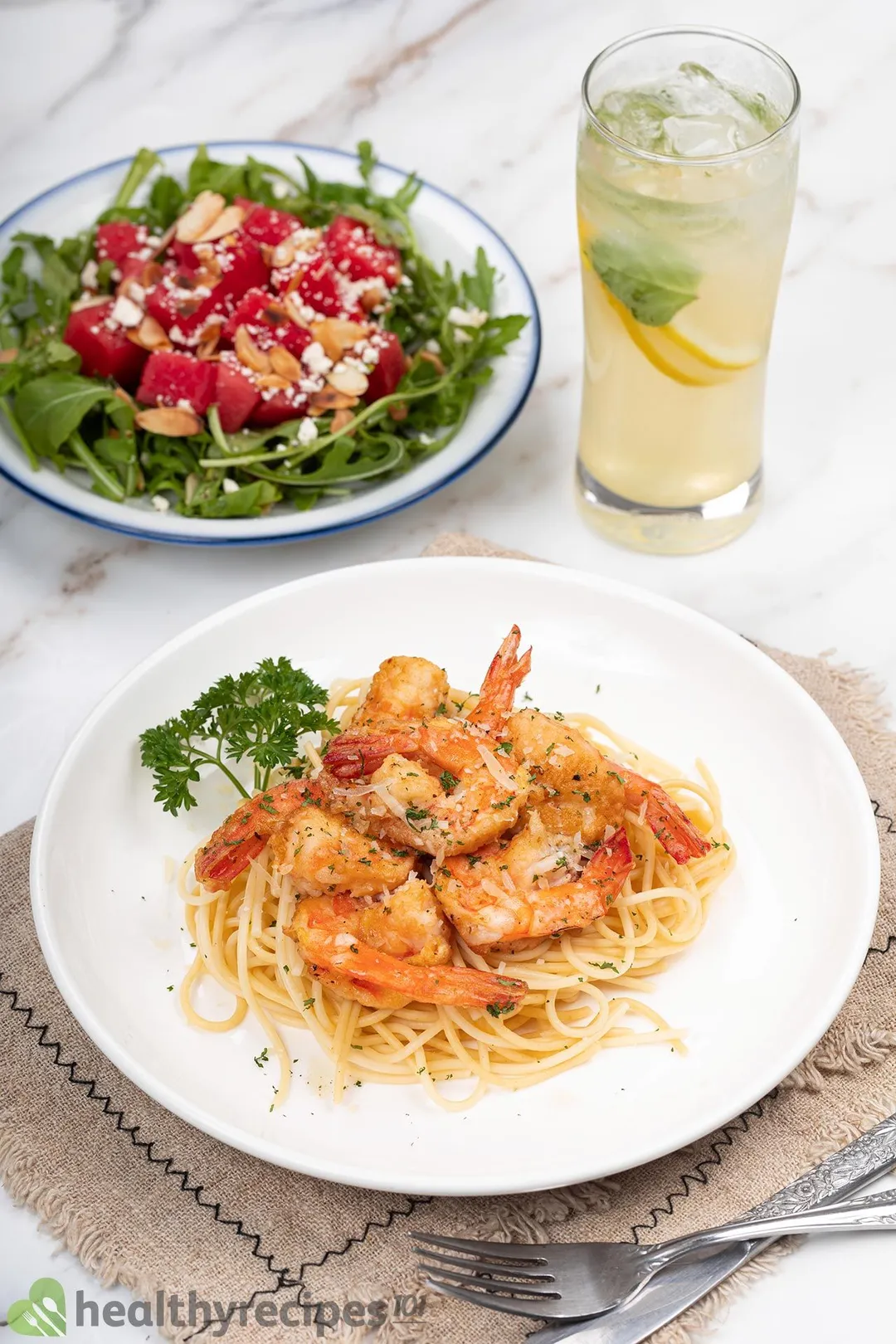
Other Restaurant-quality Dishes You Can Make At Home
- Pesto Shrimp Pasta Recipe
- Shrimp Cocktail with Red Sauce Recipe
- Shrimp Alfredo Recipe
- Shrimp Piccata Recipe
Shrimp Francese Recipe
This shrimp Francese recipe will help you make dinner in 20 minutes. It features deep-fried shrimp nicely coated in a buttery, lemony sauce.
- cook TIME 17 mins
- prep TIME 8 mins
- total TIME 25 mins
- COURSE Main Course
- CUISINE American
- SERVINGS servings
- CALORIES 488 kcal
INGREDIENTS
- 12 oz peeled shrimp (from 24 oz whole shrimp)
- 1 medium egg (beaten)
- 1/2 cup olive oil (*)
- 1/4 cup white wine
- 2 tbsp all-purpose flour
- 2 tbsp lemon juice
- 2 tbsp unsalted butter
- 1/2 tsp salt
- 1/2 tsp ground black pepper
- 1/2 cup unsalted chicken broth
- 2 tbsp parsley (finely chopped, divided)
- 0.25 oz parmesan cheese (shredded)
- 16 oz cooked spaghetti
INSTRUCTIONS
Butterfly 12 oz peeled shrimp by slicing the back open, like so. This step is optional.
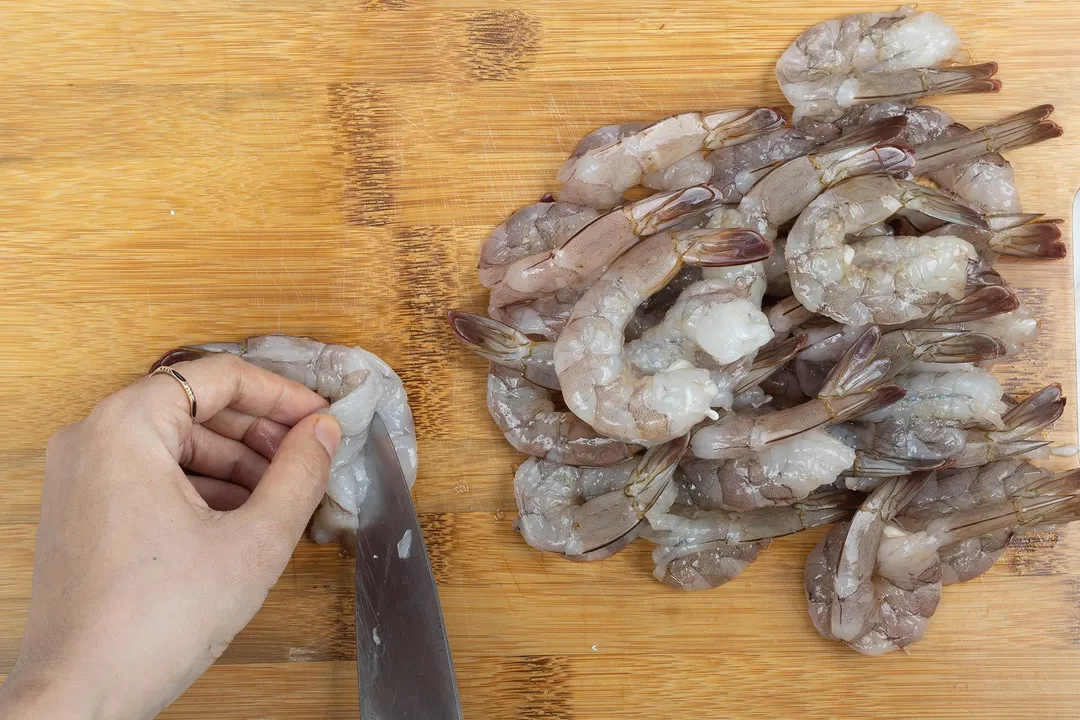
Coat each shrimp in 2 tbsp all-purpose flour.
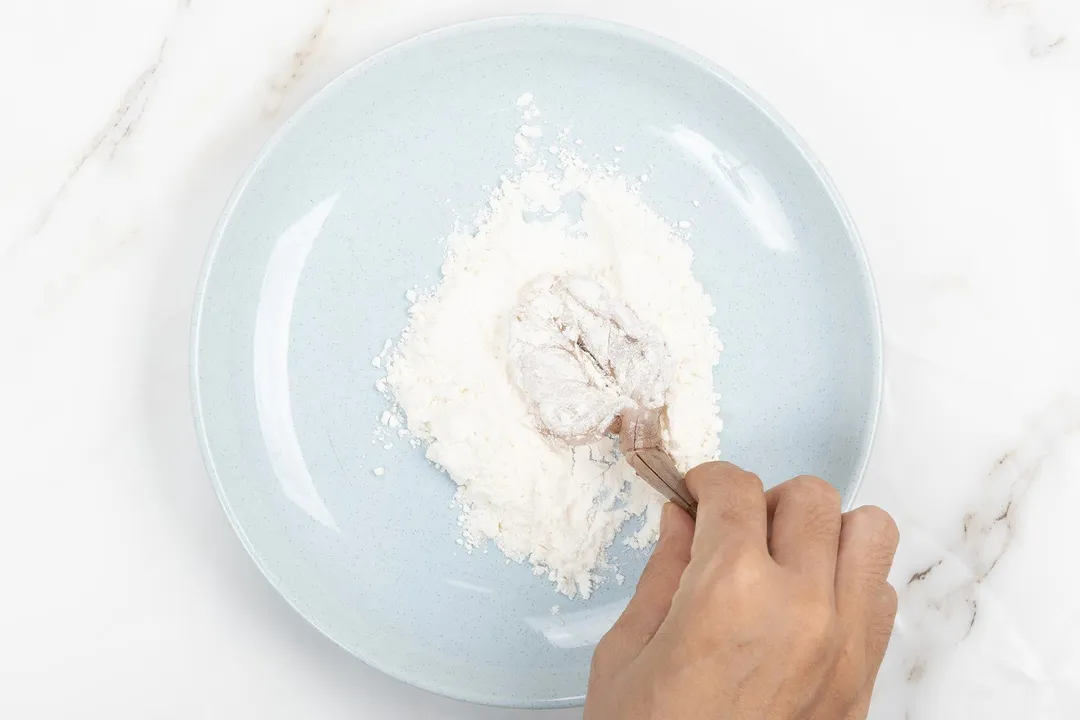
Then coat each shrimp in 1 beaten medium egg.
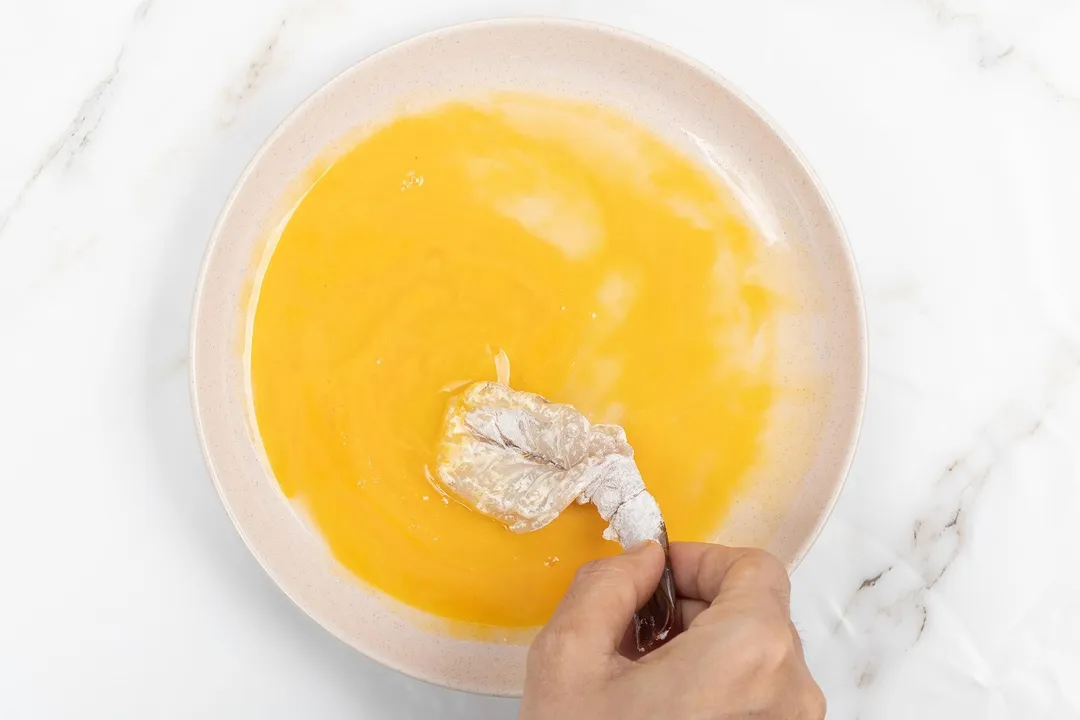
Heat a pot of 1/2 cup olive oil over medium heat. Dip a pair of chopsticks in, and when the tip sizzles, the oil’s ready for frying. Gently drop the shrimp into the hot oil.
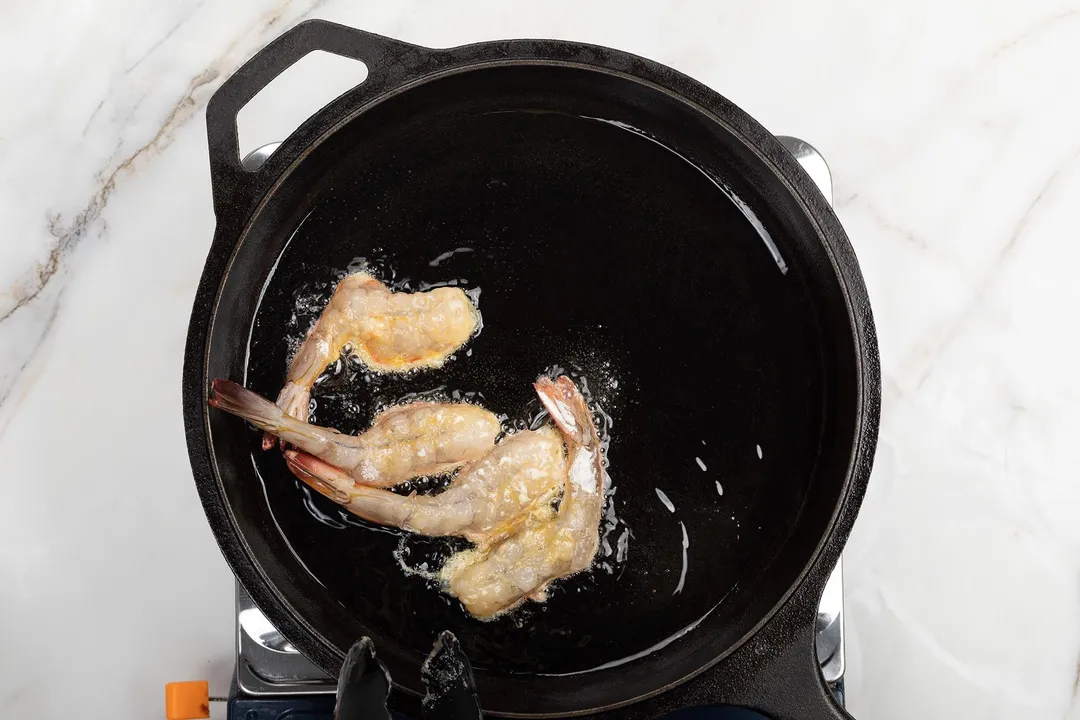
Deep-fry for 2 minutes or until golden, then transfer to a paper towel to blot excess oil. Repeat with the rest of the shrimp.
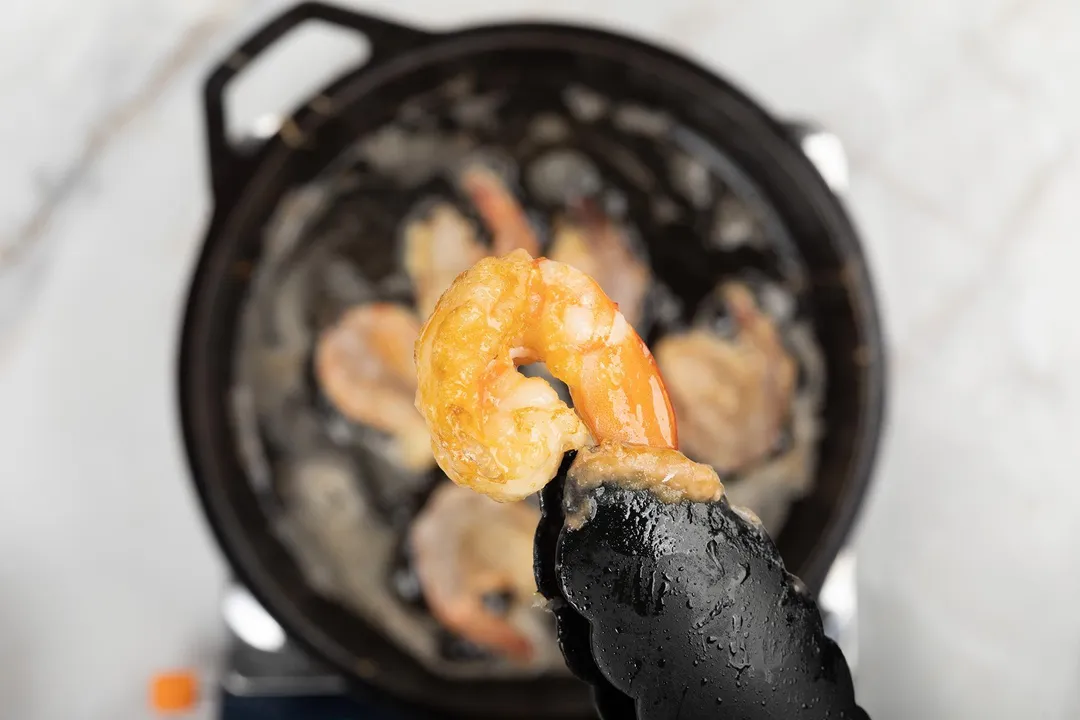
Heat a non-stick skillet over low heat then add to it 1/2 cup unsalted chicken broth, 1/4 cup white wine, 2 tbsp lemon juice, 2 tbsp unsalted butter, 1 tbsp parsley, 1/2 tsp salt, and 1/2 tsp ground black pepper. Simmer for about 1 minute.
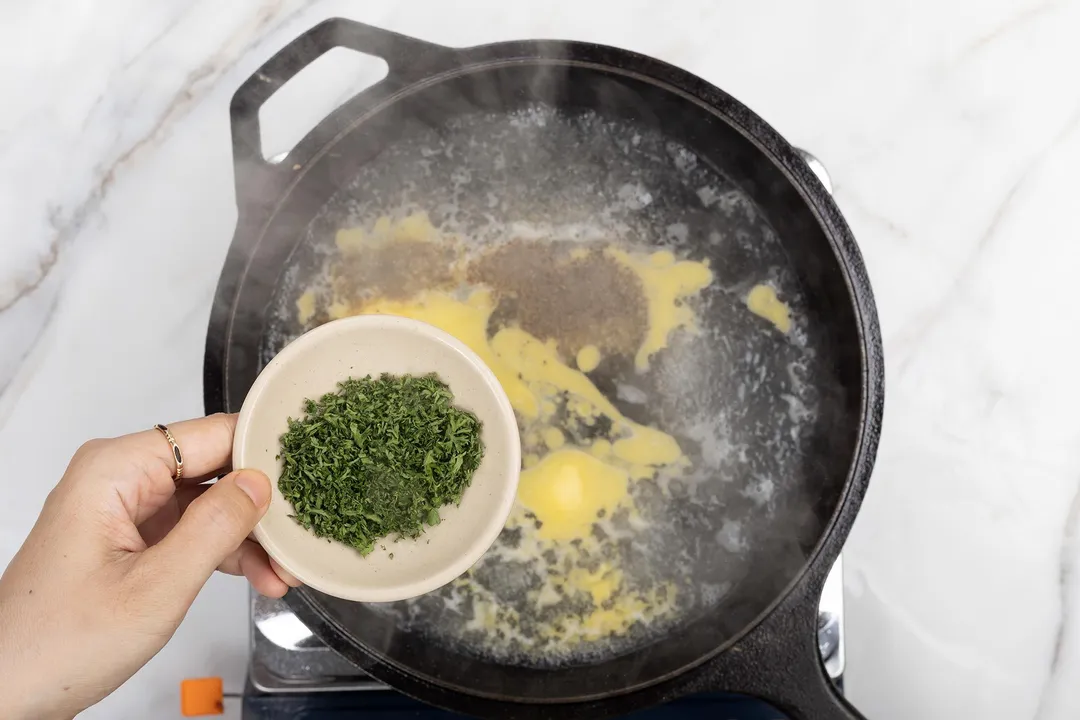
Toss the fried shrimp with this sauce.
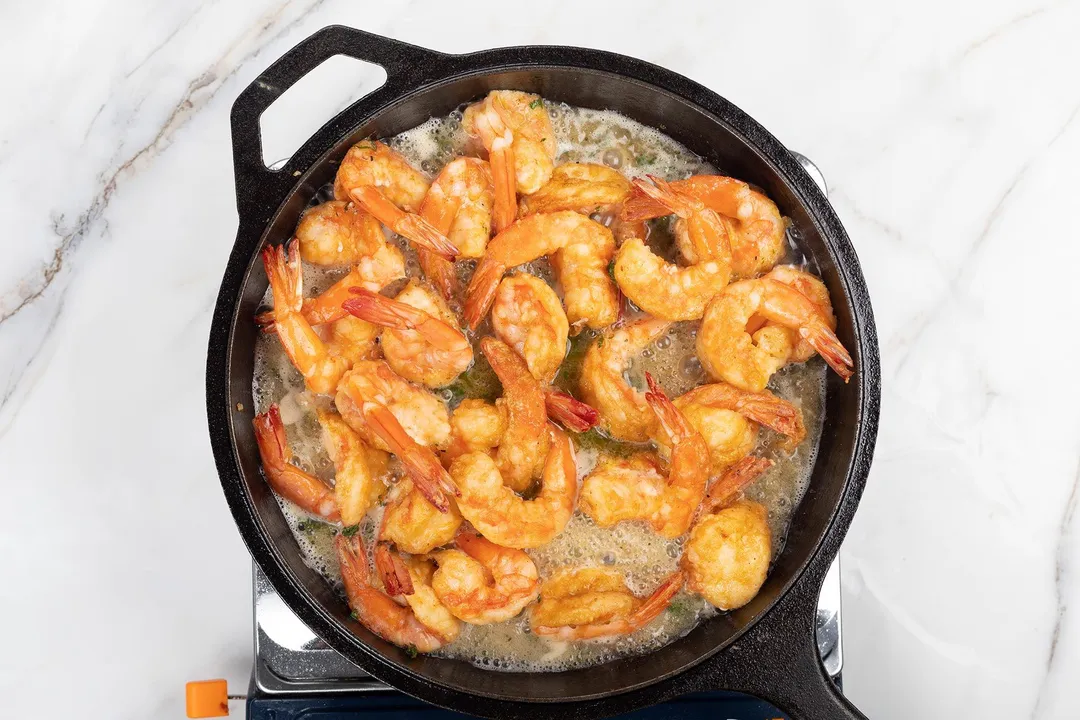
Sprinkle the remaining 1 tbsp parsley and 0.25 oz shredded parmesan cheese on top, and serve with 16 oz cooked spaghetti. Enjoy.
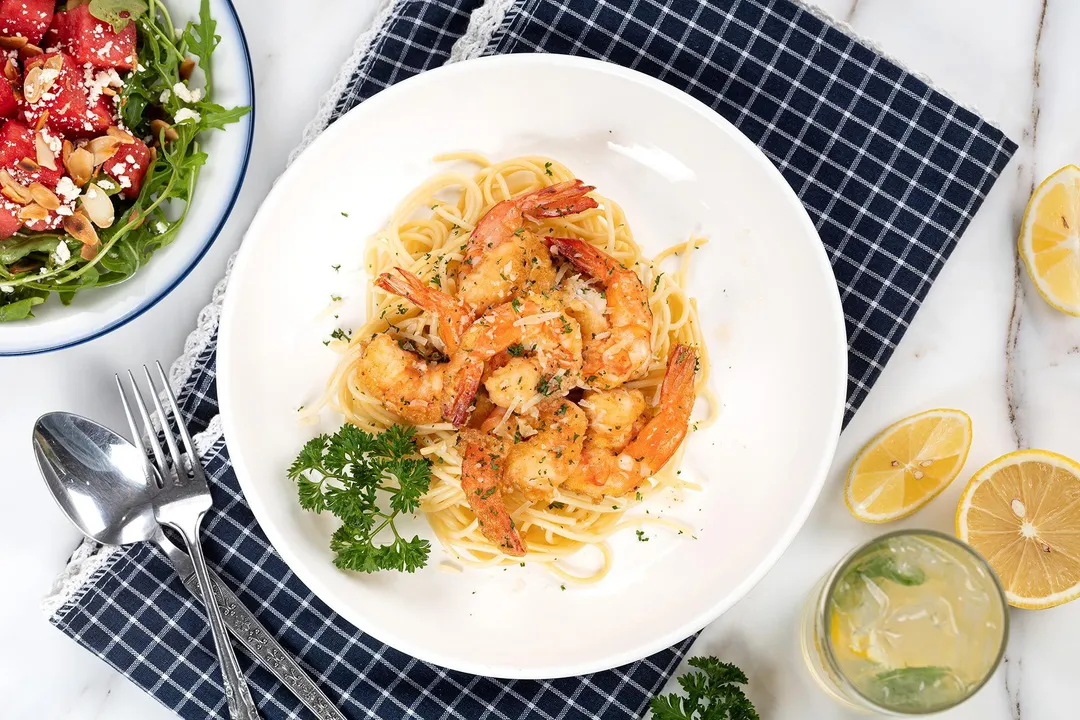
(*) Only a part of the frying oil will end up in the final product, and we have calculated nutritional values based on that amount. The whole amount is needed for the cooking process, but what actually ends up being consumed is 2 tablespoon of oil.
NUTRITION
Tuyet Pham
Head Chef, Culinary ConsultantLuna Regina
Writer, AuthorNatalie Butler, RD, LD
Nutrition Reviewer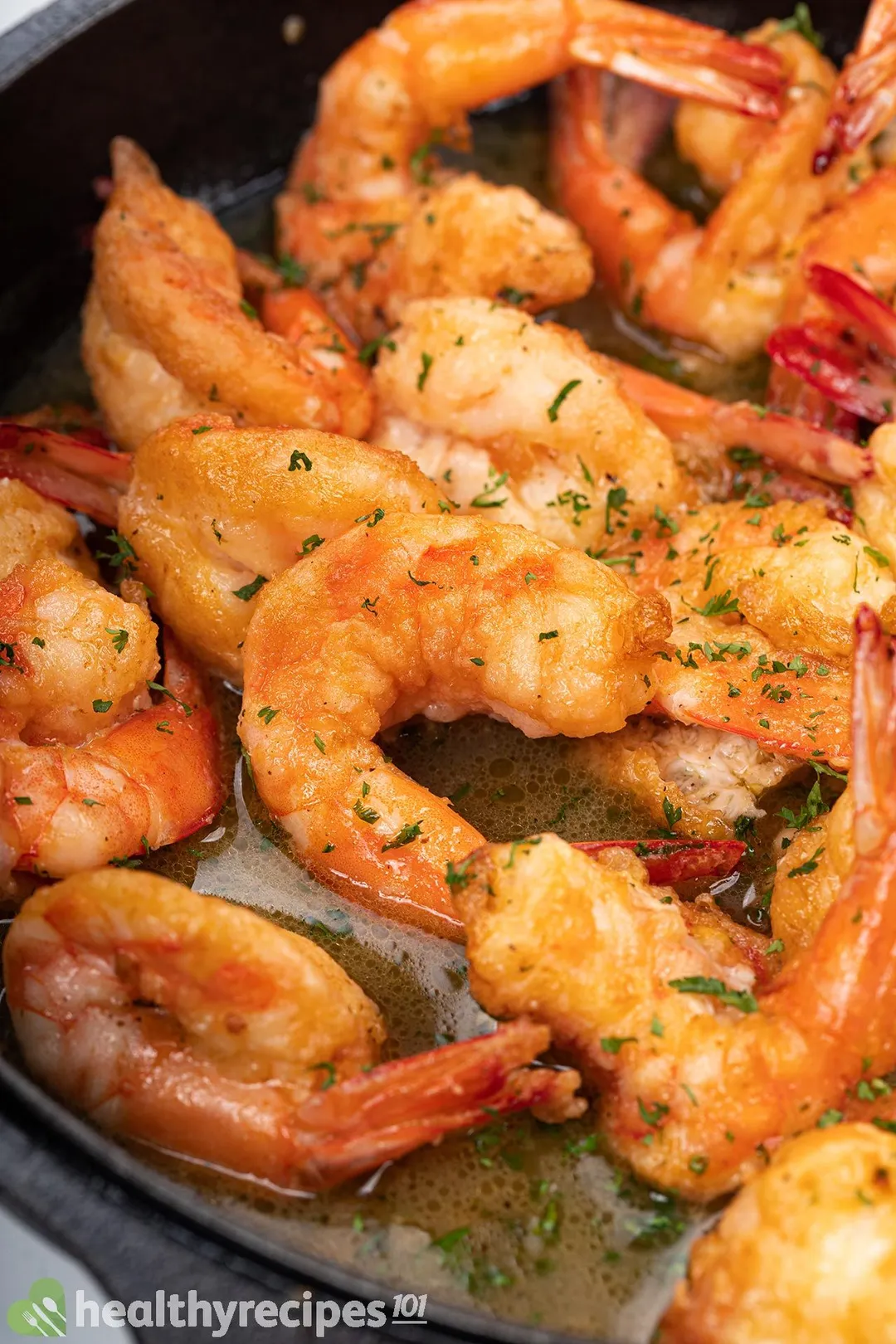
- PhilipsWonderful! Family loved it and I will definitely make it again.
